COPYRIGHT 1989 BY RADU R. FLORESCU AND RAYMOND T. MCNALLY
ALL RIGHTS RESERVED. NO PART OF THIS BOOK MAY BE REPRODUCED IN ANY FORM OR BY ANY ELECTRONIC OR MECHANICAL MEANS, INCLUDING INFORMATION STORAGE AND RETRIEVAL SYSTEMS, WITHOUT PERMISSION IN WRITING FROM THE PUBLISHER, EXCEPT BY A REVIEWER WHO MAY QUOTE BRIEF PASSAGES IN A REVIEW.
Hachette Book Group
237 Park Avenue
New York, NY 10017
Visit our website at www.HachetteBookGroup.com
First eBook Edition: November 2009
ISBN: 978-0-316-09226-5
ALSO BY RADU R. FLORESCU AND RAYMOND T. MCNALLY
In Search of Dracula: A True History of Dracula and Vampire Legends
Dracula: A Biography of Vlad the Impaler, 14311476
The Essential Dracula: A Completely Illustrated and
Annotated Edition of Bram Stoker's Classic Novel
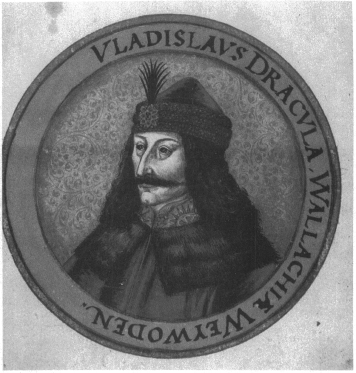
State Library of Stuttgart
Painting of Dracula recently discovered by Dr. Virgil Cndea of the Romanian Academy of Social and Political Sciences, secretary of the International Association of Southeast European Studies. The painting was in the possession of Nicolaus Ochsenbach, governor of the castle of Hohen Tbingen. It is presently located in the Library of the State of Wrtenberg in Stuttgart, and dates back to the early seventeenth century.
DEDICATION
This book is dedicated to those undergraduates of Boston College who in the spring semester of 1988 were curious enough to enroll in a course entitled The Life and Times of the Historical Dracula. The co-authors gratefully acknowledge the tough criticism, the invaluable suggestions, and, above all, the enthusiasm expressed in the final examinationsthe ultimate satisfaction of the teacher-scholar.
I T would be difficult to acknowledge the names of all those who were responsible for aiding in the preparation of this book. One way of doing it collectively is to acknowledge all those authors who contributed important works on the occasion in 1976 of the five hundredth anniversary of Prince Dracula's death.
The co-authors would like to pay a tribute to a few scholars, among many to whom we are indebted, who made substantial contributions to this work and helped us resolve some problems connected with the life story of Dracula. We owe special thanks to our fellow Dracula hunter Dr. Matei Cazacu of the Centre National de Recherches Scientifiques and the University of Paris (Sorbonne) for having generously placed at our disposal the research of his most recent monograph on the German and Russian narratives. We warmly thank Dr. Cornelia Bodea, senior research associate at the Nicolae Iorga History Institute in Bucharest (and Fulbright Exchange Professor at Boston College from 1987 to 1989), for her many suggestions concerning Stoker's folkloric and historical research. We gratefully recognize the leading expert on the history of the German Saxons of Transylvania, Dr. Adolph Armbruster, presently associated with the Institute for South East European Research at Munich University, for his help in making vital material available to us, from both his personal collection and that in the Munich State Library; Dr.  tefan Andreescu of the Iorga Institute, the author of an insightful biography of the historical Dracula (1976), who helped us locate Castle Knigstein, the place of Dracula's arrest in 1462; Dr. Mihai Pop, the former director of the Institute of Folklore in Bucharest, who, with his team, Dr. Constantin Eretescu and Dr. Georgeta Ene, was our chief anchorman in researching the Dracula castle epic. The original inspiration for this study and our methods of research we owe to the late Constantin C. Giurescu, the dean of Romanian historians, and to Radu Florescu's uncle, the late George D. Florescu, former director of the Museum of the History of the City of Bucharest, the country's leading genealogist.
tefan Andreescu of the Iorga Institute, the author of an insightful biography of the historical Dracula (1976), who helped us locate Castle Knigstein, the place of Dracula's arrest in 1462; Dr. Mihai Pop, the former director of the Institute of Folklore in Bucharest, who, with his team, Dr. Constantin Eretescu and Dr. Georgeta Ene, was our chief anchorman in researching the Dracula castle epic. The original inspiration for this study and our methods of research we owe to the late Constantin C. Giurescu, the dean of Romanian historians, and to Radu Florescu's uncle, the late George D. Florescu, former director of the Museum of the History of the City of Bucharest, the country's leading genealogist.
We recognize the contribution of detailed information on various points, which we incorporated into our text, from the following scholars: Dr. Nicolae Stoicescu of the Iorga Institute, the author of the first modern Romanian scholarly monograph on Dracula (1976); Dr. Radu Constantinescu of the Romanian State Archives for his invaluable research at the History Museum at Bucharest on the German Saxon code of laws; Dr. Octavian Iliescu, an eminent numismatist, who placed at our disposal the original Dracula coin bearing the effigy of Halley's comet; Dr. Dan Cernovodeanu, now in Paris, well-known heraldist, for his discovery of Dracula's Hungarian descendants, a study more recently completed by Dr. Paul Binder of the Iorga Institute; Dr. Pavel Chihaia, who teaches French in a Munich gymnasium, for his study on the evolution of the dragon symbol in Romanian iconography; Dr. Virgil Cndea of the Academy of Social and Political Sciences in Bucharest for his discovery of a new sixteenth-century portrait of Dracula, which he generously made available to us; Radu  tefan Ciobanu, a high-school teacher in Bucharest, for his insights into Dracula's youth and the quaint folkloric anecdotes he has gathered.
tefan Ciobanu, a high-school teacher in Bucharest, for his insights into Dracula's youth and the quaint folkloric anecdotes he has gathered.
In our research we utilized many libraries and archives that deserve recognition. We are most grateful to Dr. lancu Bidian, director of the Romanian Library and Research Institute at Freiburg-im-Breisgau, the richest resource on Romanian history in the west, and to his able assistant, Irina Nasta, for their time and especially for making an exception to their lending rules by sending rare materials to us across the Atlantic. Dr.  tefan
tefan  tef
tef nescu and his senior research associate at the Iorga Institute, Dr. Paul Cernovodeanu, were responsible for sending countless materials for our benefit from their rich collection. Dr. Mihai Ionescu, associate director of the Institute of Military History (Bucharest), was our link to the excellent resources of the Institute, particularly useful for questions of tactics, uniforms, and weaponry. Freiherr von Adrian-Weiburg, chief archivist at the Nuremberg Archives, provided invaluable bibliographic guides on the Order of the Dragon. P. Gottfried Glasner, chief librarian of the Lambach Benedictine Library in upper Austria, made two separate attempts to locate the original Lambach Dracula manuscript. Dr. Wilfred Kowavich, chief archivist at the Benedictine Abbey of Melk in lower Austria, supplied transcripts concerning the Romanian prior who mentioned Dracula in his chronicle. P. Ochsenbein, the librarian of the library at Saint Gall, offered informative remarks on the original Dracula manuscript in his collection. Dr. C. Gllner, distinguished scholar from Sibiu, placed some important materials of the Transylvanian Museum at Gundelsheim at our disposalthis being the most important museum in the west on the Transylvanian Saxons and housed in the ancient Teutonic fortress of Horneck in Bavaria. Gngr Dilmen, Filiz Ca
nescu and his senior research associate at the Iorga Institute, Dr. Paul Cernovodeanu, were responsible for sending countless materials for our benefit from their rich collection. Dr. Mihai Ionescu, associate director of the Institute of Military History (Bucharest), was our link to the excellent resources of the Institute, particularly useful for questions of tactics, uniforms, and weaponry. Freiherr von Adrian-Weiburg, chief archivist at the Nuremberg Archives, provided invaluable bibliographic guides on the Order of the Dragon. P. Gottfried Glasner, chief librarian of the Lambach Benedictine Library in upper Austria, made two separate attempts to locate the original Lambach Dracula manuscript. Dr. Wilfred Kowavich, chief archivist at the Benedictine Abbey of Melk in lower Austria, supplied transcripts concerning the Romanian prior who mentioned Dracula in his chronicle. P. Ochsenbein, the librarian of the library at Saint Gall, offered informative remarks on the original Dracula manuscript in his collection. Dr. C. Gllner, distinguished scholar from Sibiu, placed some important materials of the Transylvanian Museum at Gundelsheim at our disposalthis being the most important museum in the west on the Transylvanian Saxons and housed in the ancient Teutonic fortress of Horneck in Bavaria. Gngr Dilmen, Filiz Ca man, and Ghengis Kseo
man, and Ghengis Kseo lu of the Topkap Palace Archives in Istanbul made available original Greek and Turkish sources. Professor Charles Ted Ahearn, our colleague at Boston College in the Classics Department, translated some Latin texts for us.
lu of the Topkap Palace Archives in Istanbul made available original Greek and Turkish sources. Professor Charles Ted Ahearn, our colleague at Boston College in the Classics Department, translated some Latin texts for us.


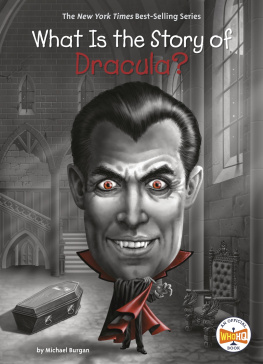

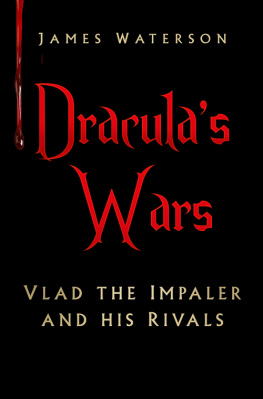
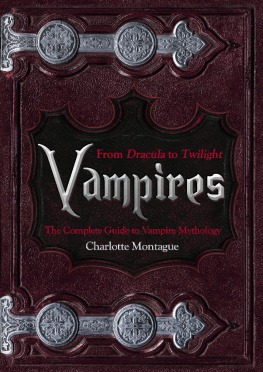



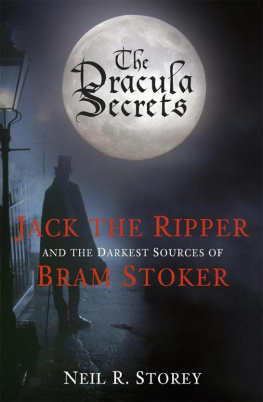
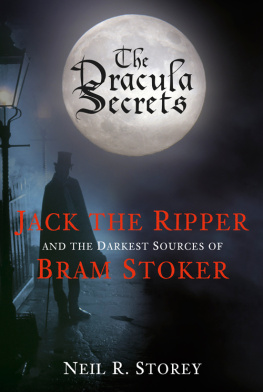
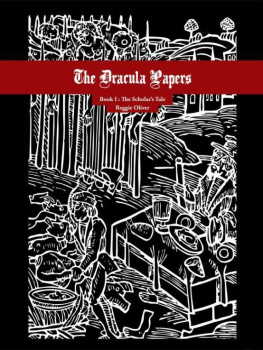


 tefan Andreescu of the Iorga Institute, the author of an insightful biography of the historical Dracula (1976), who helped us locate Castle Knigstein, the place of Dracula's arrest in 1462; Dr. Mihai Pop, the former director of the Institute of Folklore in Bucharest, who, with his team, Dr. Constantin Eretescu and Dr. Georgeta Ene, was our chief anchorman in researching the Dracula castle epic. The original inspiration for this study and our methods of research we owe to the late Constantin C. Giurescu, the dean of Romanian historians, and to Radu Florescu's uncle, the late George D. Florescu, former director of the Museum of the History of the City of Bucharest, the country's leading genealogist.
tefan Andreescu of the Iorga Institute, the author of an insightful biography of the historical Dracula (1976), who helped us locate Castle Knigstein, the place of Dracula's arrest in 1462; Dr. Mihai Pop, the former director of the Institute of Folklore in Bucharest, who, with his team, Dr. Constantin Eretescu and Dr. Georgeta Ene, was our chief anchorman in researching the Dracula castle epic. The original inspiration for this study and our methods of research we owe to the late Constantin C. Giurescu, the dean of Romanian historians, and to Radu Florescu's uncle, the late George D. Florescu, former director of the Museum of the History of the City of Bucharest, the country's leading genealogist. nescu and his senior research associate at the Iorga Institute, Dr. Paul Cernovodeanu, were responsible for sending countless materials for our benefit from their rich collection. Dr. Mihai Ionescu, associate director of the Institute of Military History (Bucharest), was our link to the excellent resources of the Institute, particularly useful for questions of tactics, uniforms, and weaponry. Freiherr von Adrian-Weiburg, chief archivist at the Nuremberg Archives, provided invaluable bibliographic guides on the Order of the Dragon. P. Gottfried Glasner, chief librarian of the Lambach Benedictine Library in upper Austria, made two separate attempts to locate the original Lambach Dracula manuscript. Dr. Wilfred Kowavich, chief archivist at the Benedictine Abbey of Melk in lower Austria, supplied transcripts concerning the Romanian prior who mentioned Dracula in his chronicle. P. Ochsenbein, the librarian of the library at Saint Gall, offered informative remarks on the original Dracula manuscript in his collection. Dr. C. Gllner, distinguished scholar from Sibiu, placed some important materials of the Transylvanian Museum at Gundelsheim at our disposalthis being the most important museum in the west on the Transylvanian Saxons and housed in the ancient Teutonic fortress of Horneck in Bavaria. Gngr Dilmen, Filiz Ca
nescu and his senior research associate at the Iorga Institute, Dr. Paul Cernovodeanu, were responsible for sending countless materials for our benefit from their rich collection. Dr. Mihai Ionescu, associate director of the Institute of Military History (Bucharest), was our link to the excellent resources of the Institute, particularly useful for questions of tactics, uniforms, and weaponry. Freiherr von Adrian-Weiburg, chief archivist at the Nuremberg Archives, provided invaluable bibliographic guides on the Order of the Dragon. P. Gottfried Glasner, chief librarian of the Lambach Benedictine Library in upper Austria, made two separate attempts to locate the original Lambach Dracula manuscript. Dr. Wilfred Kowavich, chief archivist at the Benedictine Abbey of Melk in lower Austria, supplied transcripts concerning the Romanian prior who mentioned Dracula in his chronicle. P. Ochsenbein, the librarian of the library at Saint Gall, offered informative remarks on the original Dracula manuscript in his collection. Dr. C. Gllner, distinguished scholar from Sibiu, placed some important materials of the Transylvanian Museum at Gundelsheim at our disposalthis being the most important museum in the west on the Transylvanian Saxons and housed in the ancient Teutonic fortress of Horneck in Bavaria. Gngr Dilmen, Filiz Ca man, and Ghengis Kseo
man, and Ghengis Kseo